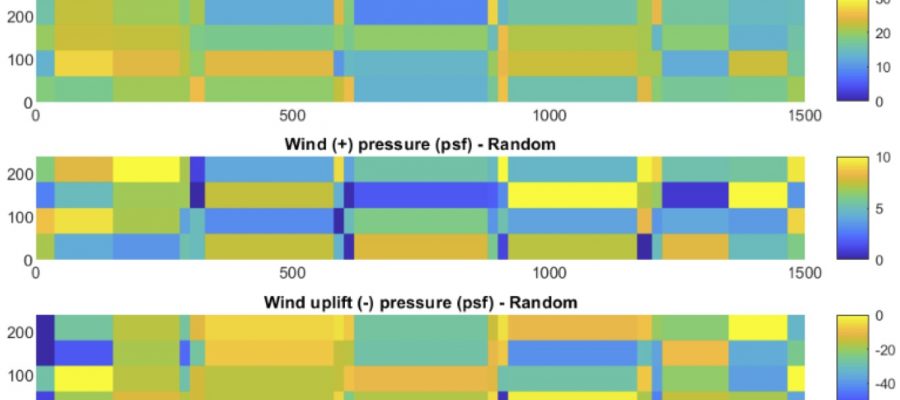Thin-walled group researchers Shahab Torabian and Ben Schafer released a new report today assessing the potential for system reliability benefits in the design of metal building roofs. The work demonstrates the potential for load re-distribution in a segment of an archetypical metal building roof and how to leverage this benefit in design.
Report abstract: This report provides a framework to incorporate structural system reliability effects in the design of roof purlins in a typical metal building. Today every roof purlin is considered as a separate component and the effect of spatial variation in the demand loads and potential redistribution and load sharing in the roof system capacity are ignored in design. Component reliability is established by first-order reliability methods implemented through load and resistance factor design. Based on recent work in loading bearing cold-formed steel framing systems the load and resistance factor design framework is extended from components to systems through an additional resistance factor to account for system influence. An archetypical metal building is designed and selected for this study. Monte Carlo simulations of a segment of the metal building roof are performed with consideration of both randomness in the demands and capacity and employing geometric and material nonlinearity in the response model of the roof. The simulations indicate that the system effect in metal building roofs is beneficial, and increases in the design capacity when evaluated against demands may be appropriate. Sensitivity to the target reliability (allowed probability of failure), deflection limits, and modeling assumptions are observed and discussed. Preliminary factors to account for roof system reliability are provided.
Download the report from http://jhir.library.jhu.edu/handle/1774.2/62381.
